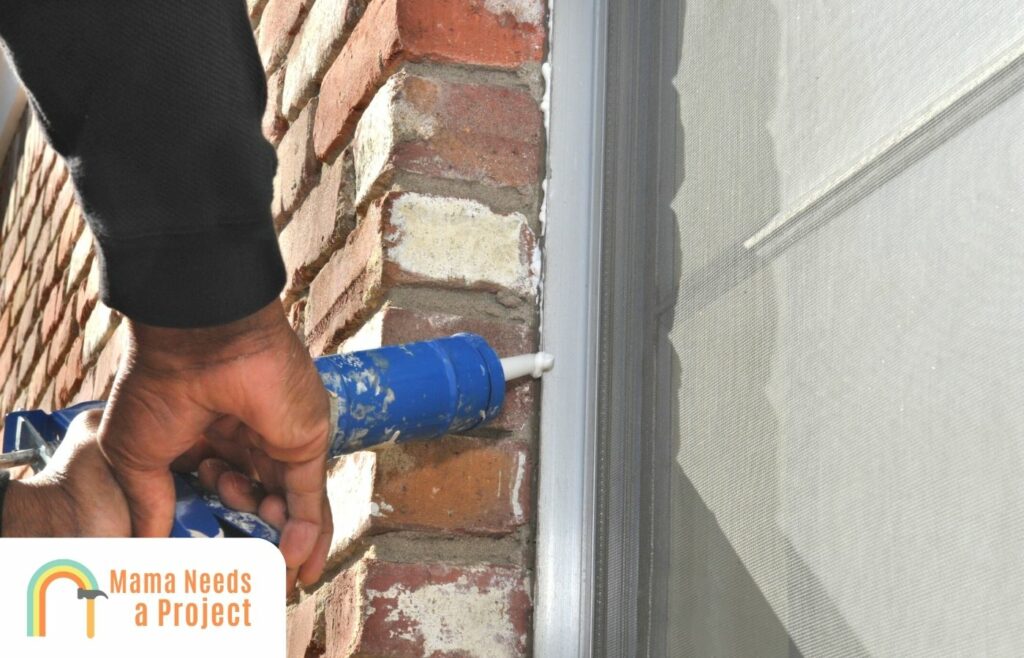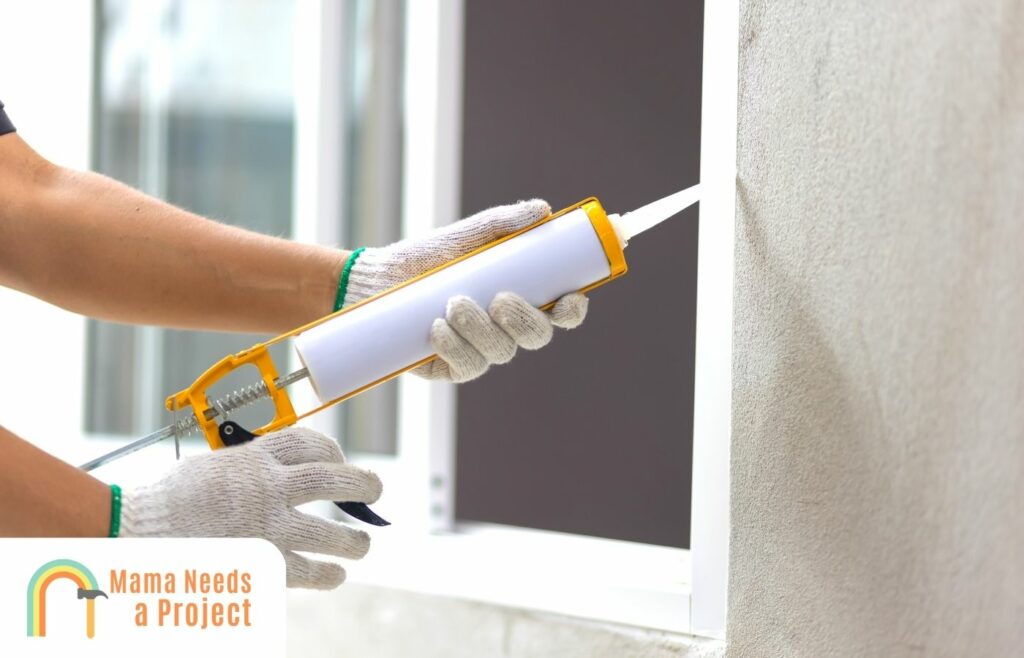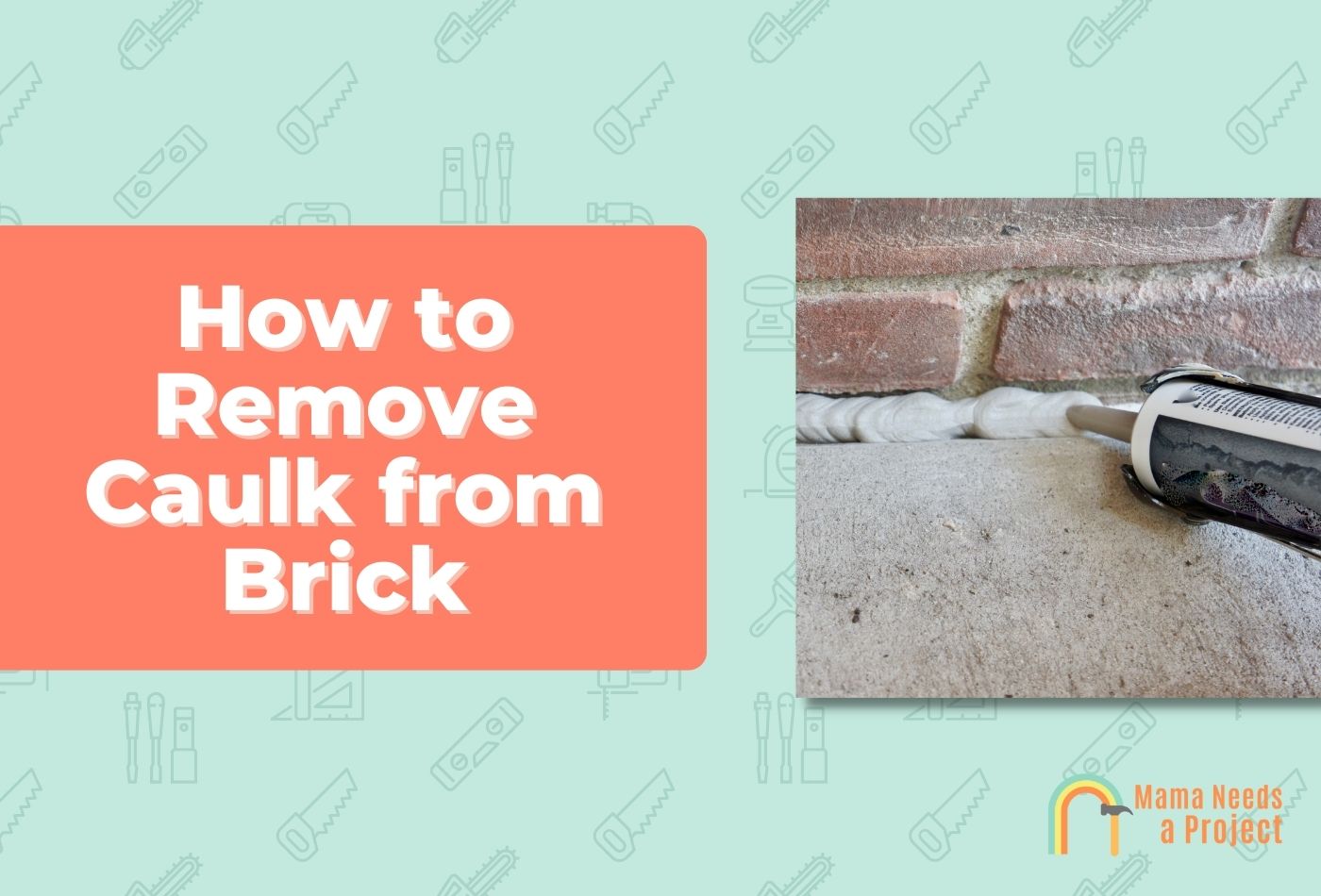How to Remove Caulk from Brick (Simple Methods!)
Are you in a situation where you need to remove old caulking from brick and replace it with new caulk? Good on you! I know it’s tempting to rush through and just slap some new caulk on top of the old caulk – but this can only lead to problems later down the road.
But taking the extra step to remove the old sealant first will ensure the fresh caulking creates a powerful, long-lasting adhesion.
Do you want to know exactly how to remove caulk from brick using a simple, affordable method? This post is for you. Let’s dig in!
- If caulk sealant gets old and loses its adhesion, it should be removed and replaced. Weakened caulk can compromise the integrity of the brick structure.
- Caulk can be removed from brick with a heat gun and scraper, rubbing alcohol, vinegar solution, or a commercial solvent.
- Tools needed: A flexible putty knife or paint scraper, heat gun, rubbing alcohol, no-scratch scouring pad, bucket and sponge.
Why Remove Caulk?
Caulk is a flexible, waterproof material used to fill and seal joints between building materials, brick surfaces, or piping.
It’s designed to prevent air or water leaks in a variety of home installation projects and commercial building repairs. You’ve probably seen this putty-like or chalky stuff in your home or between bricks.
When caulk starts to get old and break down, it loses some of its adhesive properties. This is not a good thing for your brick structure.
Without a strong masonry sealant, it can eventually become unstable, susceptible to water damage, and generally unsafe – which nobody wants.
But it’s not enough to simply apply fresh caulking over the old caulk, as this won’t create an effective seal. You’ll need to fully remove it first.
Let’s talk about how to remove caulk sealant from brick. This is a necessary project to prevent any water damage, unexpected utility or repair costs, and maintain the aesthetics of your structure.
Tools Needed to Remove Caulk
Caulk can be made from different materials: latex, silicone, vinyl, acrylic, fireproof, or polyurethane. This means we need to come prepared with a few different tools for our caulk removal job.
Here are the tools needed to remove caulking (you may not need every single one, but it’s good to be prepared):
- Standard putty knife or scraper
- A specially designed caulk remover tool
- Heat gun or blow dryer
- Utility knife
- Isopropyl alcohol (rubbing alcohol) or vinegar
- Small bucket & sponge
- No-scratch scour pads
- New caulking for reapplication
- Safety gloves & eye protection
Just like when removing adhesive from walls, it’s a good idea to wear safety gear when working with commercial solvents, rubbing alcohols, and knives. Protect your hands with gloves, and proceed with caution when using a knife to scrape.
How to Remove Caulk from Brick

Ready to learn how to remove caulk sealant from brick with some simple tools and materials? Grab your utility knife, heat gun, and rubbing alcohol.
We’re going to keep it as simple as possible, so you can get to the part where you apply the new caulk that much faster.
Note: if the brick caulking in question is silicone, it should be relatively easy to peel off in strips using your fingers and a set of pliers. Heating it up a bit first will help it come off even easier.
1. Heat up the caulk with heat gun.
The first trick to removing stubborn old caulk is to soften it with heat. For this step, you’re going to use a heat gun.
When you heat up caulking with a heat gun or even a blow dryer on high heat, the adhesion weakens.
Slowly move the heat gun or blow dryer across the caulk you want to remove. This will warm and soften the caulk into a more putty-like consistency.
Make sure not to hold the heat gun directly against the brick, as this may cause damage.
Keep in mind, the heating process will be less arduous if you focus on heating and removing one small section of caulking at a time.
If you need to remove large sections of caulk for this project, small and steady is your best bet.
2. Scrape away old silicone caulk.
Now that the old caulk is warm and softened, time to take your putty knife and start scraping the caulk from brick.
It should come off quite easily at this point. Try pulling it off in strips.
If you run into any especially stubborn caulk adhesive, reapply the heat gun to that section and go at it again with a utility knife or caulk remover tool.
3. Soften any leftover caulk with rubbing alcohol.
The heat gun method may not yield 100% perfect results. In that case, there are other ways of weakening any additional caulk.
Grab some isopropyl alcohol or mineral spirits, and apply it to a coarse sponge. Then, using firm pressure, scrub the caulk residue off. Make sure you wear protective gloves to prevent your skin from coming into contact with any denatured alcohol.
If you don’t want to use rubbing alcohol due to the strong scent or skin irritation, you can supplement it with a solution of white vinegar, baking soda, and water.
4. Clean the bricks of caulk residue.
Once you’ve used your heat gun, scraper, and rubbing alcohol to remove the majority of the caulk, it’s a good idea to clean the bricks of any remaining caulk residue.
Taking this extra step ensures all the old caulk you can’t see is fully eliminated before applying fresh caulk.
To clean the bricks, you can use a few different solvents. A rag or sponge dampened with isopropyl rubbing alcohol, mineral spirits, or white vinegar and baking soda solution will do the trick.
Another cleaner that works on residue adhesive is Goo-Gone, an affordable commercial cleaner you can buy online or in any home improvement store.
5. Apply new caulk to bricks.

To apply your new caulk, you’ll first need to select the right caulking for the project.
Assuming you’re working with an exterior brick structure, you’ll want to look for a highly waterproof, durable caulk designed to withstand changing weather.
You’ll also want to make sure the caulking is right for brick surfaces, so read labels carefully before buying.
A couple good masonry caulking options are this GE Supreme Silicone Caulk, and this LOCTITE Concrete Caulk that you can even paint over.
Once you clean the bricks and select your new caulk, check the label to see if it requires you to also prime the brick surface before application.
Steps to Applying New Caulk to Brick:
- Prime the brick surface (if needed).
- Put the caulk into the caulk gun.
- Cut the plastic nozzle at a 45-degree angle and pierce the seal.
- Squeeze the fresh layer of caulk into the joint from the bottom up, applying steady pressure to the caulk gun.
- Let the caulk fully dry.
- Clean up any excess caulk. Do you see any excess caulk on the brick surface? Remove dried caulk by scraping it off the brick surface with a knife. You can also sand dried caulk by hand to make the finished job look more neat and pleasing.
Alternative Method to Remove Old Caulk From Brick
1. Commercial Caulk Removers
If you want to skip the homemade cleaning solutions or rubbing alcohol and go straight for the powerful stuff, you have options.
There are commercial cleaners designed specifically for dissolving caulk. Krud Kutter Caulk Remover is one option, and Klean Strip Caulk Remover is another.
These gel-like removers adhere to the caulk for a long period of time, moistening and weakening its adhesion.
Commercial caulk cleaners typically work for all types of caulk, like silicone, polyurethane, and latex caulk.
2. All-Purpose Commercial Solvents
Don’t want to buy a chemical digestant designed specifically for removing caulking from brick? You might have an all-purpose cleaner already on hand that can digest the adhesive.
Dicone NC9 is a silicone dissolver that can effectively digest silicone caulk. And ever heard of WD-40? Yes, this can actually work to remove caulk from brick too!
Wondering if you can paint silicone caulk? Check out these simple methods to paint silicone caulk!
FAQs
What dissolves caulk residue?
Commercial caulk remover, isopropyl alcohol, all-purpose digestants, and white vinegar and baking soda can all dissolve caulk residue.
Will rubbing alcohol remove caulking?
Yes, isopropyl rubbing alcohol will remove exterior caulk residue from brick with a sponge or wire brush and a little elbow grease.
Can I use Goo-Gone to remove silicone caulk?
Goo-Gone can help dissolve caulk residue, but since it’s not designed to remove caulking, it may not yield perfect results.
Goo-Gone is more effective at cleaning bricks of any silicone caulk residue after completing the main caulk removal process.
Final Thoughts
Removing caulk is easier than you think!
The bottom line: caulk removal can be completed using a combination of heat and a scraper.
Can’t get all the caulk off with your scraper? Apply isopropyl alcohol or a white vinegar and baking soda solution to a sponge or brush, and scrub off the remaining caulk residue.
Alternative methods of caulk removal include using a commercial caulk remover or all-purpose cleaner like WD-40. In no time, that old caulk will be gone and replaced by fresh, strong caulking!

Jessica Vaillancourt is a freelance writer and blogger obsessed with the Travel, Wellness, and Personal Development industries.
She has 5+ years of experience helping human-first agencies, global companies, and entrepreneurs crush their content marketing goals, and serve more people. Jessica’s work has appeared on leading websites like UpgradedHome.com, BetterHelp.com, and TheDiaryofaNomad.com.
Today, her sole focus (besides finding the world’s best coffee shop) is writing to serve humans, and slow traveling abroad to expand her mind. You can get to know her work at JessAnneWriting.com.



